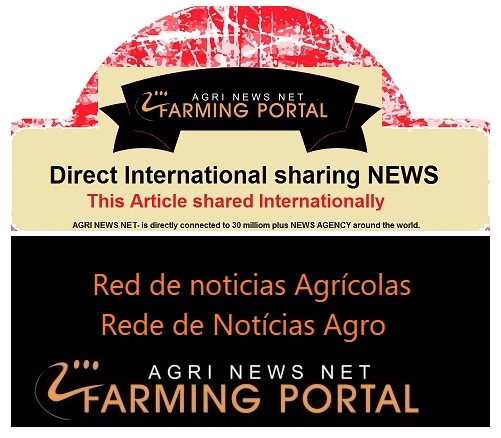World Farming Agriculture Commodity news - Weekly Updated - Exclusive and very popular - Delivering a Media service 365 days of the year.
Global rice prices are projected to rise over the next decade, with increasing production in Southeast Asia being a crucial factor in mitigating these price hikes. However, rice production in the region has stagnated in recent years, and further expansion of production areas and cropping intensity remains limited in the foreseeable future. Despite these challenges, narrowing the rice production yield gap presents an opportunity to boost rice output in Southeast Asia.
This report explores sustainable strategies to enhance rice production in the region and examines potential opportunities for global grain and oilseed stakeholders. According to RaboResearch estimates, the global rice stocks-to-use ratio and the ratio among the top nine rice exporters are expected to remain below their respective levels from the 2023/24 marketing year (MY) through MY 2033/34. This is due to a combination of increasing baseline global rice consumption and slowing production growth. Consequently, global rice prices are likely to surpass pre-2023 levels throughout this period.
Additionally, Vietnam, a key player in the global rice market, has set a strategic goal to reduce its rice exports by more than 50% by 2030. If successfully implemented, this policy could significantly influence global rice prices, further emphasizing the need for sustainable production enhancements in Southeast Asia.

Grain Market Update: Wheat Futures Surge Amid War and Weather Concerns
For the week, March corn gained 8¾ cents, while March soybeans fell 13½ cents. March soybean meal lost $5.50 per short ton, and March soybean oil rose 9 points. In the wheat markets, March hard red winter wheat surged 17 cents, March soft red winter wheat gained 17¼ cents, and hard red spring wheat added 5¼ cents.
Wheat Futures Rally on Short Covering and Weather Premium
Wheat futures climbed 17 to 23 cents across all three classes on Friday, driven by concerns over geopolitical instability and extreme winter weather. This marked the second consecutive week of gains, as traders covered short positions ahead of a three-day weekend.
Jerry Gulke, president of the Gulke Group, notes that traders are closely monitoring developments in the Black Sea region following Russia's bombing of a Ukrainian port. Additionally, forecasts predicting bitterly cold temperatures in key U.S. winter wheat production areas have heightened concerns about potential winterkill.
“It’s going to get really cold next week. It’s 30-something below zero, actual temperature, in North Dakota, and it’s going to sink south. The last time that happened, I recall, was 1996,” says Gulke.
A Paradigm Shift in the Wheat Market?
Wheat has lagged behind other grains in recent months, particularly corn, which rebounded from August 2024 lows to reach new highs last week. However, speculator activity suggests a potential shift in the wheat market.
Managed money funds have held short positions in all three classes of wheat for nearly 2.5 years, following the initial price surge after the Black Sea war began. According to the latest CFTC Commitment of Traders Report, last week these funds were short nearly 82,000 contracts of soft red winter wheat (futures only). This week, they covered or bought back 7,900 of those positions. In hard red winter wheat, they were short over 35,000 contracts but covered more than 5,500.
Meanwhile, index fund traders, who only take long positions, purchased around 10,000 contracts of Chicago wheat as a hedge against inflation. The key question now is whether traders will continue buying and eventually go net long, potentially fueling a stronger rally.
“They’re not long yet in Chicago wheat, and the large speculators, who supposedly drive the market, are still short. They’ve been short for about 2.5 years,” Gulke explains.
Technical Signals and Market Trends
A critical technical question is whether wheat markets can break above the October/November highs, similar to corn's recent performance. On Friday, hard red winter wheat closed above the $6 mark, while soft red winter wheat finished right at $6, suggesting potential for further gains.
“We got above the November highs in Chicago, but not the October highs,” says Gulke. “However, if you look at Kansas City wheat, it appears stronger than Chicago and is at or above its October high.”
Another factor to consider is whether corn will relinquish its leadership role in the grain complex, allowing wheat to take over. Wheat prices had recently dipped low enough to be used in feed rations, but it remains uncertain if this trend will continue.
Market Strategies and Producer Considerations
Gulke notes that he still holds most of the 2024 spring wheat crop in on-farm storage in North Dakota, after lifting hedges last year. He remains unsold on the 2024 soft red winter wheat crop and is cautious about call options, though he acknowledges that this could be an opportune moment for their use.
For producers who sold the majority of their crop at harvest, re-ownership strategies may be worth considering. Historically, wheat has shown a tendency to move higher quickly, and $6.00 wheat may appear attractive to speculators and index funds.
As geopolitical tensions persist and weather risks loom, wheat traders and producers will be watching closely for further market shifts in the weeks ahead.
 World Farming Agriculture and Commodity news - Short update 3rd February 2025
World Farming Agriculture and Commodity news - Short update 3rd February 2025

Here’s a concise summary of the key points from President Ramaphosa’s State of the Nation Address (SONA) and economic updates:
- Agriculture Support & Trade: SONA emphasized improving logistics, rural supply chains, and expanding export markets to boost South Africa’s agricultural sector. Given geopolitical shifts, diversifying trade relations is crucial for long-term growth.
- Crop Production Outlook: Despite early-season heat stress, recent rainfall has provided some optimism. The Crop Estimates Committee projects a 0.3% y/y increase in summer crop planting, potentially ensuring a stable 2025/26 marketing year.
- Rand & Economic Indicators: The rand strengthened to R18.48/US$, gaining 1.1% w/w and 2.8% y/y, despite market uncertainty over US tariffs. Brent crude oil averaged US$75.56/barrel, down 4.4% y/y due to rising US crude inventories.
- Fuel Price Forecast: By 05 March 2025, petrol (95 unleaded) could rise by 6c/l, while diesel may decrease—500 ppm by 7c/l and 50 ppm by 12c/l—if no government intervention occurs.

















